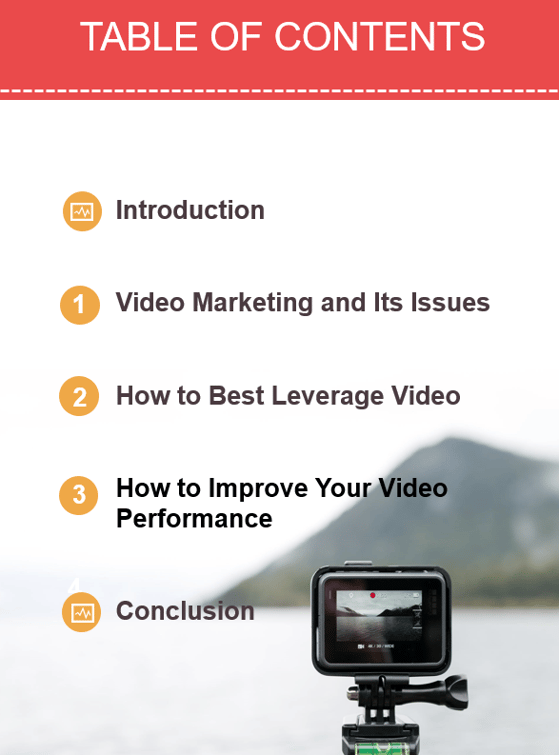Video Marketing Tips: How to Run Video Across the Marketing Funnel
- Home
- Video Marketing Tips: How to Run Video Across the Marketing Funnel
This article is part of our video marketing guide and is a summary of Simi Ojuri's presentation from TwentyThree at the HubSpot User Group Meeting in June 2018.
Nowadays, video marketing is becoming an increasingly important part of every company’s strategy. Therefore, it makes sense to understand how to properly use video across the entire marketing funnel.
As Randi Fishkin, the founder of Moz, said:
"The branding and stickiness value of video means that every viewer is worth (in the marketing sense) 10x more than a reader of context (and maybe more)"
He’s been using video to help out his business clients and this technique represents one of the main resources of revenue for him.
This example proves the fact that video is a very powerful tool for marketing, which has been thoroughly measured in order to understand its true potential.

Video Marketing and Its Issues
Video is a great instrument for telling stories and for communication, not to mention the fact that it is very human.
It is composed of 2 sides:
- the qualitative side
- the quantitative side (which is lacking)
This means that marketers do not extract data from videos to gauge results. Hence, they have to strive not only to produce it but also to measure it. In fact, having compelling content that no one watches is of no help to our brand.

Top Video Marketing Tips
1. Adopting the Full Funnel Mindset
Most people working in marketing use video solely at the top of the buyer’s journey, whereas they should think about the whole funnel by using tools like case studies or webinars.

2. Carefully Evaluating Video Throughout the Funnel
Surprisingly enough, TwentyThree found out that the amount of plays being measured is barely 55%, when it should be 100% instead. Plays are just as important as clicks on your website.
The video metrics to be used are:
- engagement
- measuring conversions and leads

3. Creating the Right Types of Video
By tracking a billion video plays, it was discovered that:
- 2-minute videos accounted for 51% of videos produced and for 11% of engagement
- 45-minute videos accounted for 3% of videos produced, but for 30% of engagement
This data is to say that you might produce the wrong kinds of videos, but this is on a case-by-case basis. The discrepancy between the videos being created and the videos driving engagement is evident.

4. Running Video Across Every Platform
These days, marketers do not take advantage of the whole range of available platforms. Instead, they just post a video on YouTube or on Facebook.
The ultimate goal is to lead users to their website, where they can be tracked best.

5. Making Users Dwell on Your Website
The idea is not to drive users away from your website by making them go to YouTube. This way you are pushing them out of your marketing funnel.
Hosting video landing pages and video hubs on your website does the trick.
This applies to e-mail marketing as well. You don’t want to be sending e-mails to users leading them to a third party platform, where they might receive suggestions for totally unrelated videos.

6. Keeping Track of Lead Scoring and Attribution Data
Many marketers do not realise that tracking video data is just as important as any other type of tracking (like Twitter clicks and so on).
Failing to do so will inevitably result in inaccurate data. Thus, video marketing needs to be given the proper attention.

More Video TIPS
How to Best Leverage Video
There are a few techniques that can be put in place in order to get the most out of video.

1. Experiment with Snippets of Video
Start by creating shorter versions of your video to lure users to your website. As a matter of fact, it was found that, on average, the user watches:
- 58 seconds of video on YouTube
- 20 seconds of video on Facebook
- 4 minutes of video on your website
Consequently, the latter is the place where you want to post your video.

2. Size Engagement and Conversions
Put aside video plays and focus on engagement and conversions. This can be done in a more accurate manner by actually keeping your content on your website.

3. Determine the Proper Length of Content
Depending on your audience, the length of content should vary.
For instance, the company Intel was able to determine that, on average, their users were watching 27.4 minutes of their video which generated a thousand leads.
Therefore, it is safe to assume that their content was pretty engaging.

4. Exploit Every Possible Channel to Run Your Video
In order to increase your chances of generating new leads, you should be using different channels, your website and your e-mails.
This task can be easier to manage by using a video marketing platform.

5. Diversify Video Formats
Less than 20% of marketers are currently using video for their strategy, but you should not miss the opportunity to test whether it might work for your business as well.
You can use different formats such as video collectors, GIFs or animated thumbnails to increase clickthrough rates.

6. Actively Use Video Metrics
Video should be integrated with the other marketing tools and platforms. Moreover, video metrics should be shared across the entire organisation in order to leverage these useful data.

How to Improve Video Performance
Again, the goal here is to not only to produce video, but also to analyse it.
Below are some useful suggestions to increase video performance.

1. Employ Video Marketing Analytics
Video analytics (meaning data gathered from YouTube, Facebook and all of the other channels) should be aggregated with web analytics, so as to determine which channels are the top performers.

2. Become HubSpot’s Partner
HubSpot is a marketing automation tool you might want to consider integrating with and sending your information to.
From just one platform, you can see things like real-time video heat-maps, e-mail video previews and so on.

3. Embed Video into E-mail Campaigns
TwentyThree offers services like native distribution to Facebook, YouTube, Twitter and LinkedIn.
Furthermore, it enables video integration into e-mails through trackable GIFs and thumbnails.

Conclusion: Video Marketing Tips
- Depending on your brand, you should create the right type of content that takes into consideration the entire marketing funnel
- Test which channels are the best fit for your video
- Send your video metrics to all the available tools (HubSpot, Google Analytics, etc…) to determine lead scoring and attribution
- Take advantage of video marketing platforms and do not confine yourself to just posting a video on YouTube or Facebook without any follow-up

Recommended Actions
- Read Our eBook "How to Run Video Across the Marketing Funnel"
Related Articles
- Invest in video marketing to build and sell your brand
- Video marketing increases brand engagement
- Video Marketing Statistics to Guide your Digital Marketing Decisions
- How Can Video Marketing Increase Your Conversion Rates
- Video As An Inbound Marketing Tool
- How Video Marketing Affect Your Potential Customers’ Buying Decision
